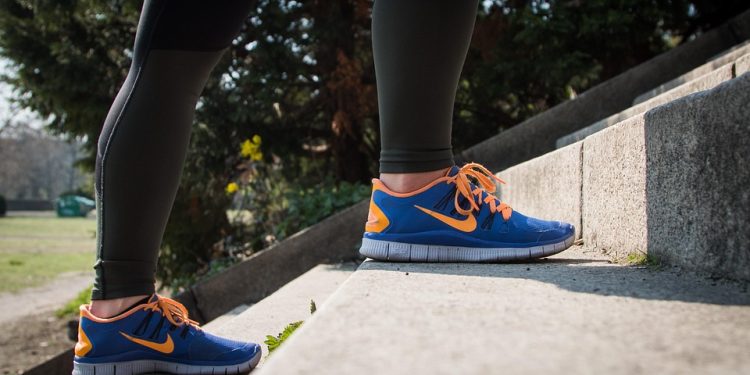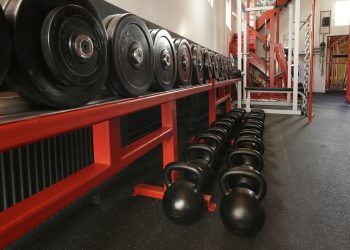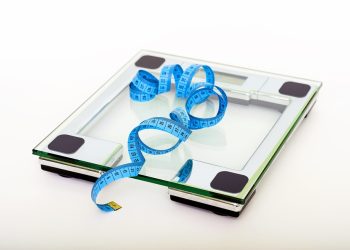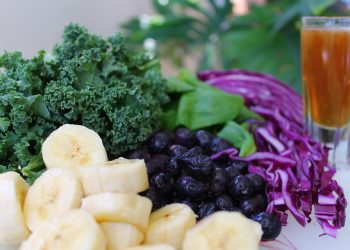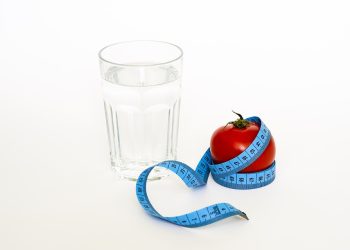Weight Loss for Beginners: Your Simple Starter Guide
Embarking on a weight loss journey can feel overwhelming, especially if you’re just starting. With so much information available, it’s easy to get lost in complex diets and intense workout routines. This guide is designed to cut through the noise and provide you with a simple, sustainable plan to achieve your weight loss goals. We’ll focus on fundamental principles that you can easily incorporate into your daily life, setting you up for long-term success.
Understanding Weight Loss: The Basics
Weight loss boils down to a simple equation: burning more calories than you consume. This is known as creating a calorie deficit. However, it’s not just about cutting calories drastically. Sustainable weight loss is about making gradual, healthy changes to your diet and lifestyle.
Here’s a breakdown of the key components:
- Calories In vs. Calories Out: This is the fundamental principle. You need to burn more calories than you eat to lose weight.
- Macronutrients: These are the building blocks of your diet: protein, carbohydrates, and fats. Understanding their roles is crucial.
- Micronutrients: Vitamins and minerals are essential for overall health and play a role in energy metabolism.
- Exercise: Physical activity helps burn calories and improves your overall health and well-being.
- Lifestyle Factors: Sleep, stress management, and hydration all play significant roles in weight loss.
Step 1: Setting Realistic Goals
Before you begin, it’s crucial to set realistic and achievable goals. Aiming to lose too much weight too quickly can be discouraging and even unhealthy. A healthy and sustainable rate of weight loss is typically 1-2 pounds per week.
Here’s how to set effective goals:
- Start Small: Instead of focusing on the total amount of weight you want to lose, break it down into smaller, more manageable goals. For example, aim to lose 5 pounds in the first month.
- Be Specific: Instead of saying “I want to eat healthier,” try “I will eat one serving of vegetables with every meal.”
- Make it Measurable: Track your progress using a journal, app, or scale. This will help you stay motivated and identify areas where you need to make adjustments.
- Ensure it’s Attainable: Choose goals that are realistic for your lifestyle and schedule. Don’t try to overhaul your entire life overnight.
- Keep it Relevant: Make sure the goal aligns with your overall health and well-being.
- Time-Bound: Set a deadline for each goal. This will help you stay focused and accountable.
Example: Instead of “I want to lose weight,” try “I want to lose 10 pounds in 10 weeks by walking for 30 minutes, 5 days a week, and reducing my sugar intake.”
Step 2: Dietary Changes for Weight Loss
Your diet plays a vital role in weight loss. Focus on making sustainable changes to your eating habits rather than following restrictive fad diets.
Prioritize Whole, Unprocessed Foods
Whole foods are foods that are as close to their natural state as possible. These foods are generally lower in calories, higher in nutrients, and more filling than processed foods.
Examples of whole foods include:
- Fruits: Apples, bananas, berries, oranges
- Vegetables: Broccoli, spinach, carrots, peppers
- Lean Proteins: Chicken breast, fish, beans, lentils, tofu
- Whole Grains: Brown rice, quinoa, oats, whole-wheat bread
- Healthy Fats: Avocado, nuts, seeds, olive oil
Reduce Processed Foods, Sugary Drinks, and Unhealthy Fats
Processed foods are often high in calories, sugar, salt, and unhealthy fats. These foods can contribute to weight gain and other health problems.
Examples of foods to limit or avoid include:
- Sugary Drinks: Soda, juice, sweetened coffee and tea
- Processed Snacks: Chips, cookies, candy
- Fast Food: Burgers, fries, pizza
- Refined Grains: White bread, white rice, pasta
- Foods High in Saturated and Trans Fats: Fatty meats, fried foods, processed baked goods
Control Portion Sizes
Even healthy foods can lead to weight gain if you eat too much of them. Pay attention to portion sizes and use smaller plates and bowls to help control your intake.
Here are some tips for portion control:
- Use smaller plates: This can trick your brain into thinking you’re eating more than you actually are.
- Measure your food: Use measuring cups and spoons to ensure you’re eating the correct portion size.
- Read food labels: Pay attention to the serving sizes listed on food labels.
- Avoid eating directly from the bag or container: This can lead to mindless overeating.
Stay Hydrated
Drinking plenty of water is essential for overall health and can also aid in weight loss. Water helps you feel full, boosts your metabolism, and helps your body burn calories more efficiently.
Aim to drink at least 8 glasses of water per day. You can also include other hydrating beverages like unsweetened tea and sparkling water.
Mindful Eating
Mindful eating involves paying attention to your food and eating slowly and deliberately. This can help you savor your meals, recognize when you’re full, and avoid overeating.
Here are some tips for mindful eating:
- Eat slowly: Chew your food thoroughly and take your time.
- Pay attention to your food: Notice the colors, textures, and aromas of your food.
- Eliminate distractions: Turn off the TV, put away your phone, and focus on your meal.
- Listen to your body: Stop eating when you’re full, even if there’s still food on your plate.
Step 3: Incorporating Exercise into Your Routine
Exercise is an important part of a healthy weight loss plan. It helps you burn calories, build muscle mass, and improve your overall health and well-being.
Choose Activities You Enjoy
The key to sticking with an exercise routine is to choose activities that you enjoy. This could be anything from walking and running to swimming and dancing. If you hate going to the gym, find activities that you can do outdoors or at home.
Here are some examples of enjoyable activities:
- Walking: A simple and effective way to burn calories.
- Running: A more intense form of cardio.
- Swimming: A low-impact exercise that’s easy on the joints.
- Dancing: A fun and energetic way to burn calories.
- Cycling: A great way to explore your surroundings and get some exercise.
- Hiking: A challenging and rewarding outdoor activity.
Start Slowly and Gradually Increase Intensity
If you’re new to exercise, it’s important to start slowly and gradually increase the intensity and duration of your workouts. Trying to do too much too soon can lead to injuries and burnout.
Start with short workouts, such as 15-20 minutes, and gradually increase the duration as you get fitter. Aim for at least 150 minutes of moderate-intensity aerobic exercise or 75 minutes of vigorous-intensity aerobic exercise per week.
Include Strength Training
Strength training is important for building muscle mass, which helps boost your metabolism and burn more calories at rest. You don’t need to lift heavy weights to benefit from strength training. Bodyweight exercises like push-ups, squats, and lunges can be just as effective.
Aim to do strength training exercises at least two days per week, working all major muscle groups (legs, arms, chest, back, and shoulders).
Make Exercise a Habit
The key to making exercise a habit is to find ways to integrate it into your daily routine. Here are some tips:
- Schedule your workouts: Treat your workouts like any other important appointment.
- Find a workout buddy: Exercising with a friend can help you stay motivated and accountable.
- Listen to music or podcasts: This can help make your workouts more enjoyable.
- Reward yourself: After completing a workout, reward yourself with something healthy and enjoyable, like a relaxing bath or a healthy snack.
Step 4: Lifestyle Factors and Weight Loss
Weight loss is not just about diet and exercise. Other lifestyle factors, such as sleep, stress, and hydration, also play a significant role.
Prioritize Sleep
Getting enough sleep is crucial for weight loss. When you’re sleep-deprived, your body produces more of the stress hormone cortisol, which can lead to increased appetite and cravings for unhealthy foods. Aim for 7-8 hours of sleep per night.
Manage Stress
Chronic stress can also contribute to weight gain. Find healthy ways to manage stress, such as yoga, meditation, spending time in nature, or talking to a therapist.
Stay Consistent
Consistency is key to long-term weight loss success. Don’t get discouraged if you have setbacks. Just get back on track as soon as possible.
Conclusion
Weight loss for beginners doesn’t have to be complicated. By focusing on the fundamentals – setting realistic goals, making gradual dietary changes, incorporating exercise into your routine, and prioritizing healthy lifestyle habits – you can achieve your weight loss goals and improve your overall health and well-being. Remember to be patient with yourself, celebrate your successes, and focus on making sustainable changes that you can maintain for the long term. Consulting with a healthcare professional or registered dietitian can provide personalized guidance and support tailored to your individual needs and circumstances.
Frequently Asked Questions (FAQs)
- Q: How quickly can I expect to lose weight?
- A: A healthy and sustainable rate of weight loss is typically 1-2 pounds per week. However, individual results may vary depending on factors such as your starting weight, metabolism, and activity level.
- Q: Do I need to follow a specific diet to lose weight?
- A: No, you don’t need to follow a specific diet. Focus on making healthy, sustainable changes to your eating habits, such as prioritizing whole foods, reducing processed foods, and controlling portion sizes.
- Q: What if I have a bad day and overeat?
- A: Don’t beat yourself up about it! Everyone has setbacks. Just get back on track with your healthy eating and exercise routine as soon as possible. One bad day won’t derail your progress.
- Q: Is exercise necessary for weight loss?
- A: While you can lose weight through diet alone, exercise is an important part of a healthy weight loss plan. It helps you burn calories, build muscle mass, and improve your overall health and well-being.
- Q: What type of exercise is best for weight loss?
- A: The best type of exercise is the one that you enjoy and can stick with. Choose activities that you find fun and engaging, whether it’s walking, running, swimming, dancing, or cycling.
- Q: How much water should I drink per day?
- A: Aim to drink at least 8 glasses of water per day. You may need to drink more if you’re active or live in a hot climate.
- Q: Can I still eat my favorite foods while trying to lose weight?
- A: Yes, you can still enjoy your favorite foods in moderation. The key is to control portion sizes and make healthy choices most of the time.
- Q: Should I count calories?
- A: Counting calories can be helpful for some people, but it’s not necessary for everyone. If you find it helpful, use a calorie tracking app or journal. If not, focus on making healthy food choices and paying attention to your body’s hunger cues.
- Q: What are some healthy snacks I can eat while trying to lose weight?
- A: Healthy snack options include fruits, vegetables, nuts, seeds, yogurt, and hard-boiled eggs.
- Q: When should I seek professional help?
- A: If you have any underlying health conditions or are struggling to lose weight on your own, it’s a good idea to consult with a healthcare professional or registered dietitian.

